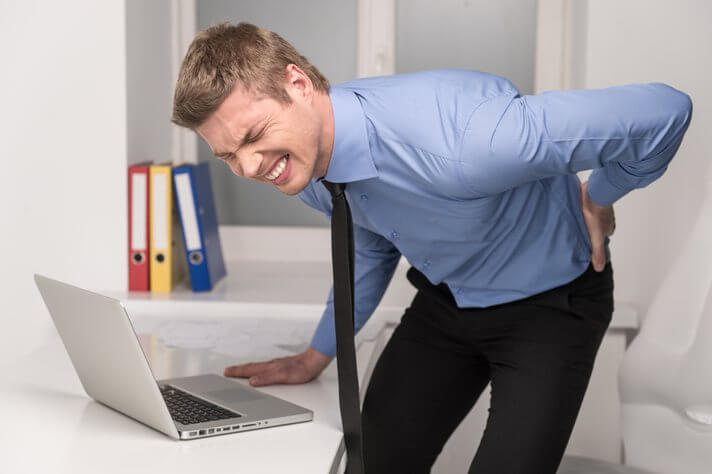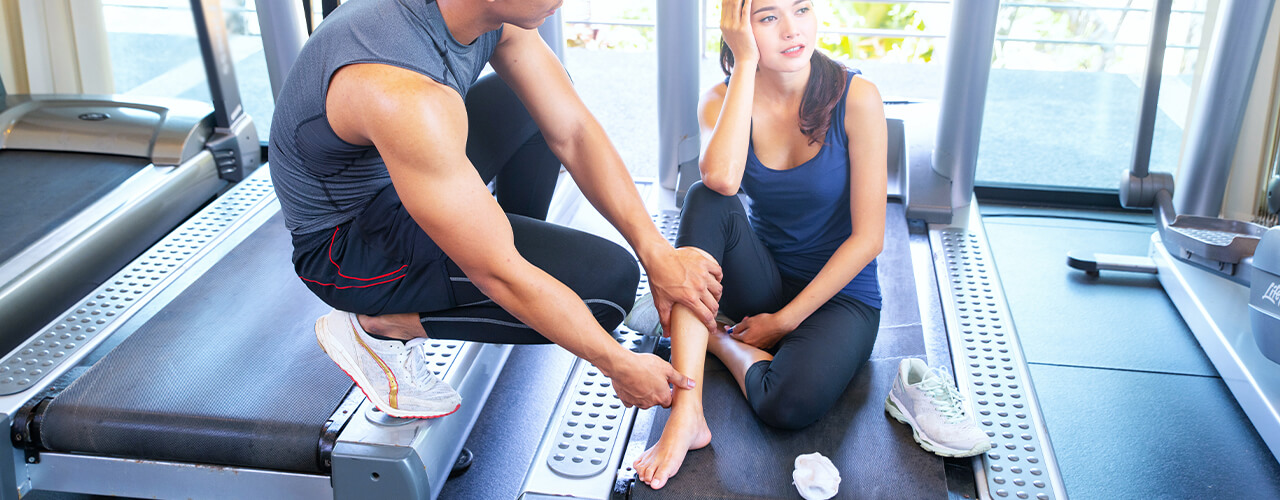When it comes to hip and knee pain , there is a lot that can cause either one or the other. In reality, knee pain can cause hip pain as well as hip problems can cause knee pain. It’s a condition called “ cross -talk .” What this means is that nerves from one part of your body “talk” to the other. For example, when you flex your foot (curl it up), your knee will flex with it. That’s because of the nerve communication between the two muscles .
When this phenomenon occurs in hip and knee pain, the cause of one can trigger some kind of discomfort or sensation in another. For example, someone who has knee pain and stands with a turned-out leg for a long time can get hip pain on that side .
Here are some other common scenarios:
Hip Pain Can Cause Knee Pain: If inflammation or swelling occurs in your hip joint, it can cause knee discomfort because of the nerve communication between them. The same type of connection happens if the muscles around your hips become injured. This is why you might have hip and knee pain when you have a strained hamstring or groin muscle .
Knee Pain Can Cause Hip Pain: Sometimes an injury to your knee will impact the movement of your hips in a way that triggers a sensation of tightness in your upper thighs near your hip joints. In addition, knee pain can cause hip discomfort because of the proximity of the two joints.
One way to quickly distinguish whether your hip or your knee is causing you pain is to stand up and lock your legs straight in front of you while sitting on a table . If there’s pain on one side, chances are it’s occurring in either your hip or your knee.
The Relationship Between Hip Strength and Knee Pain
If you are referred to physical therapy for knee pain, you will almost certainly do a lot of hip-focused exercises because there is a strong link between hip strength and knee pain. Your physical therapist will specifically instruct you on exercises to strengthen your hip abductors (gluteus medius) and hip extensors (gluteus maximus).
But why is that? Why would you concentrate on muscles so far away from your knee? Simply put, knee position during the heel strike and stance phases of the gait cycle is the answer. During gait, the gluteus maximus and medius help to keep the pelvis from “dropping” during the stance phase. If these muscles are weak, there is a momentary hip/pelvis drop, which causes the knee to dive in towards the other knee, resulting in kneecap compression. As a result, the chronic stress placed on the knee cap as a result of these altered mechanics causes knee pain.
So, how will you strengthen these muscles during physical therapy? Your physical therapist will instruct you on exercises to strengthen your hip abduction and extension, as well as to isolate your gluteus medius and gluteus maximus.
Exercises for Hip Strengthening
- Clam Shells
Clam shells address the link between hip strength and knee pain by focusing on the hip external rotators. Begin the exercise by lying on either side and bending your knees and hips. Slowly lift your top-side leg away from your bottom-side leg while keeping your hips and knees bent at the same angle. Raise one leg until the hips and upper body begin to roll backwards. Stop the movement and slowly lower the leg back to the starting position if this occurs. Throughout the movement, keep your ankles together.
- Straight Leg Raise Abduction
Another excellent exercise for addressing the relationship between hip strength and knee pain is straight leg raise abduction. Lie on your left side. Keep your bottom leg straight while bending your top leg. Your top leg should be parallel to your torso. Raise and lower that leg from the table. Keep the outside of your foot flat and parallel to the ceiling, rather than leading the lift with your toe. You should be able to feel the muscle in your outer hip contracting.
- Bridges
Bridges are an excellent way to address the relationship between hip strength and knee pain by addressing the hip extensors. While lying on your back, tighten your lower abdominals, squeeze your buttocks, and then raise your buttocks off the floor/bed as if you were building a “Bridge” with your body.
- Lateral Walk with Exercise Band
Walk to the side with an elastic band around both ankles and your feet spread apart. Keep your knees bent throughout.
Exercise Band Three-Way:
Hip Flexion:
Move the target leg forward as shown while standing with an elastic band looped around your ankles. Return to your starting point and then repeat.
Hip Abduction:
Move the target leg out to the side as shown while standing with an elastic band looped around your ankles.
Hip Extension:
Move the target leg back as shown while standing with an elastic band looped around your ankles. Maintain a straight line with your knees the entire time.
Are You Looking for Relief for Your Hip and Knee Pain?
Pace Physical Therapy in San Jose, California specializes in non-surgical relief and recovery therapies for injuries. Our physical therapists in San Jose, CA are movement professionals who can help you heal easily and accomplish your physical goals. Do your knees feel sore, or do they feel as if, without warning, they could buckle under you? Do sharp hip pains find it hard to get up in the morning, walk about during the day, and lay down at night? Hip joint pain and knee pain, especially if you’re dealing with both, can seriously interfere with your life. Whatever could be uncomfortable for you, physical therapy may help you get safely and easily to the source of your problem without the need for harmful drugs or surgery. To alleviate your hip and knee pain entirely, make an appointment with Pace Physical Therapy in San Jose, CA, saving you the need for potentially harmful medicine or surgical correction. We strive every day to provide excellent service for all our patients because we understand it can be frustrating not being able to do what you love most due to an injury keeping us off the field or court! Contact us today to schedule your appointment!



